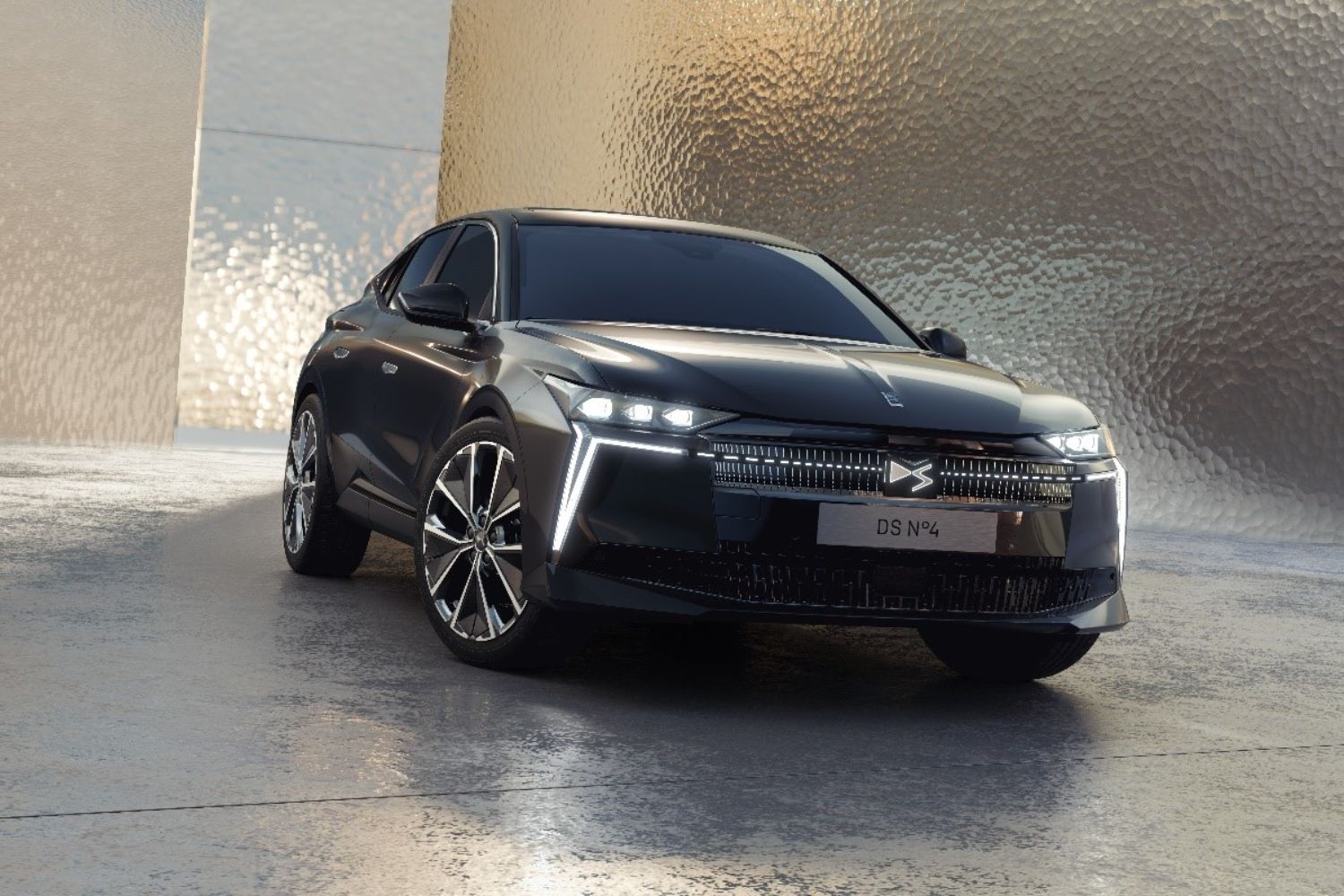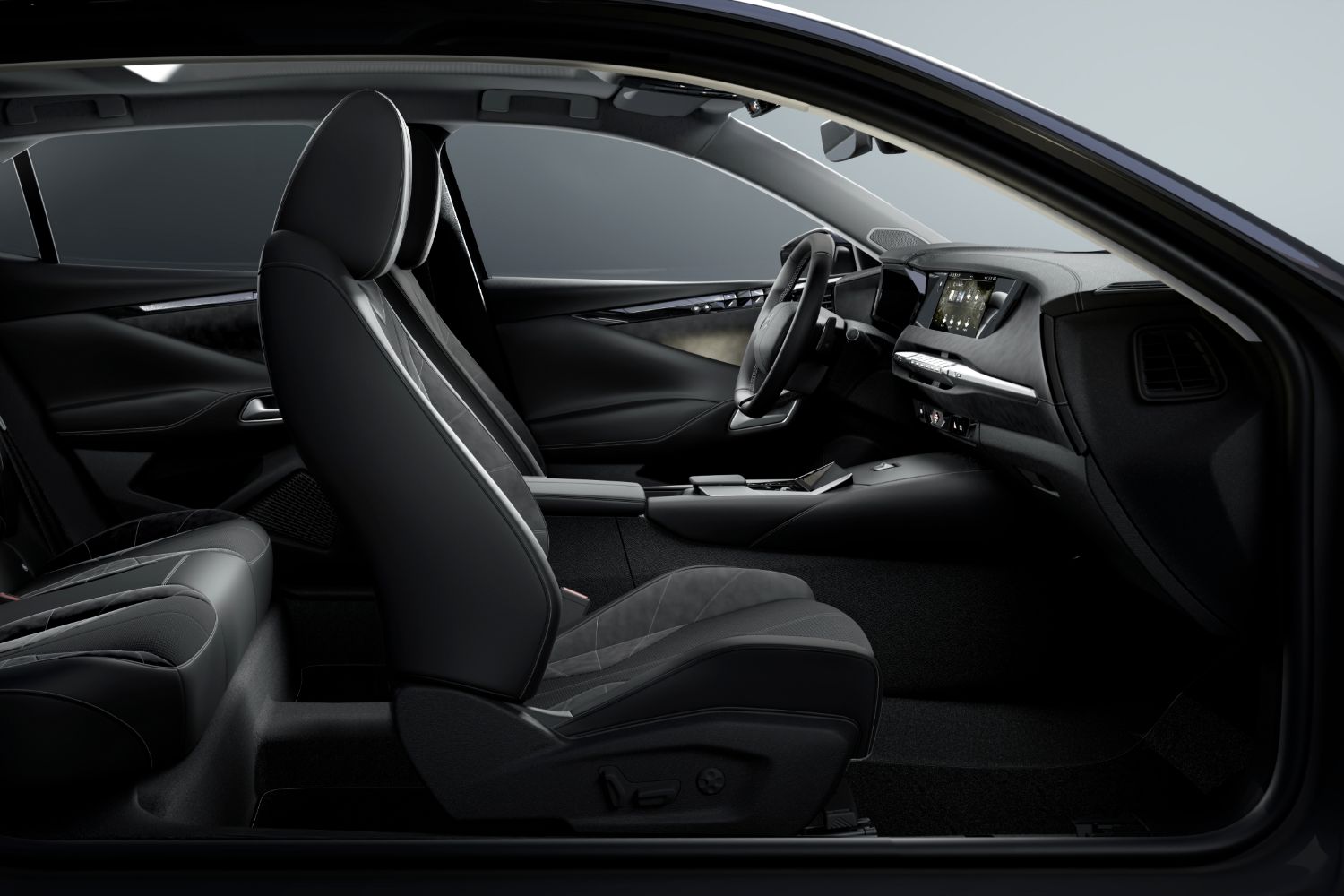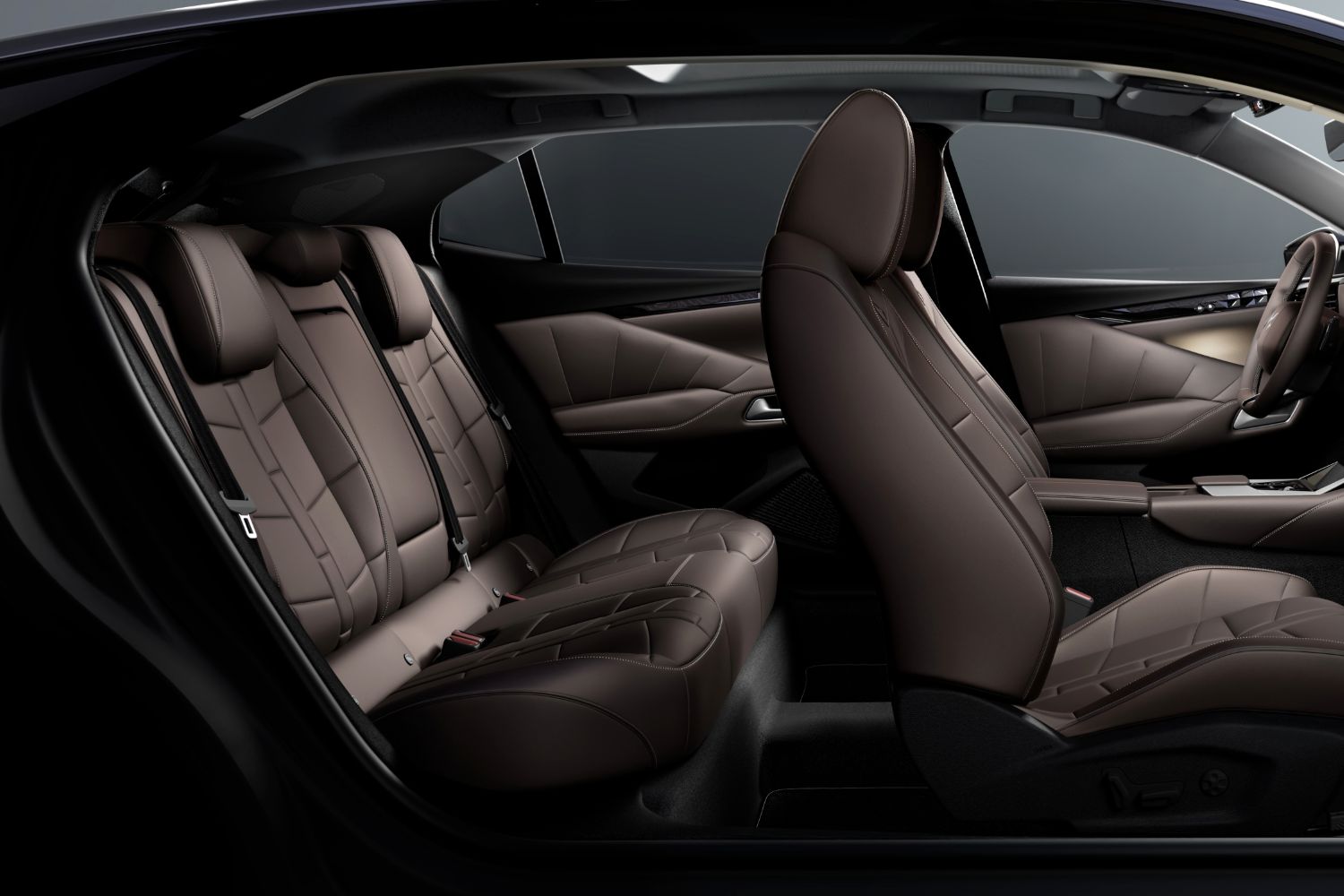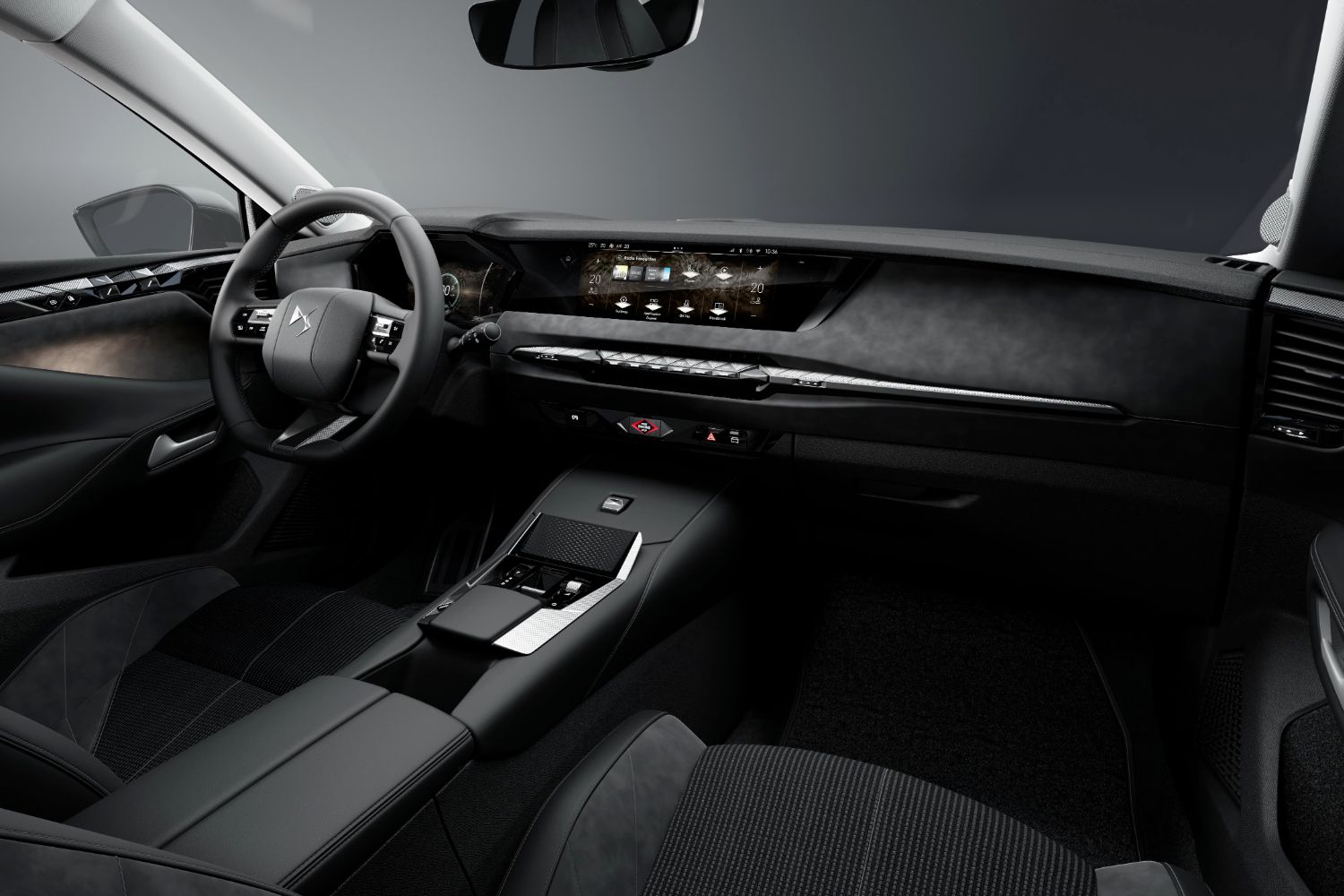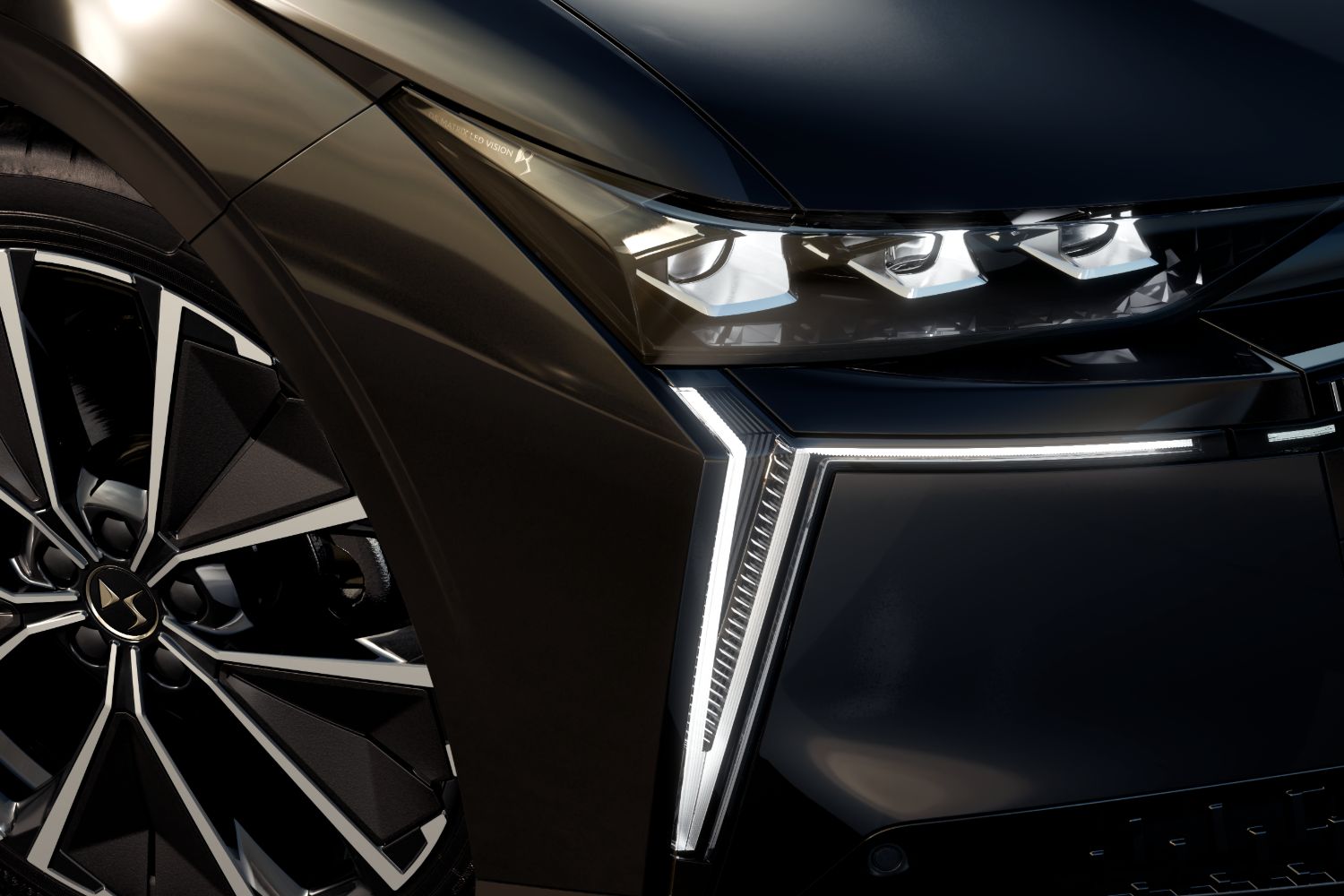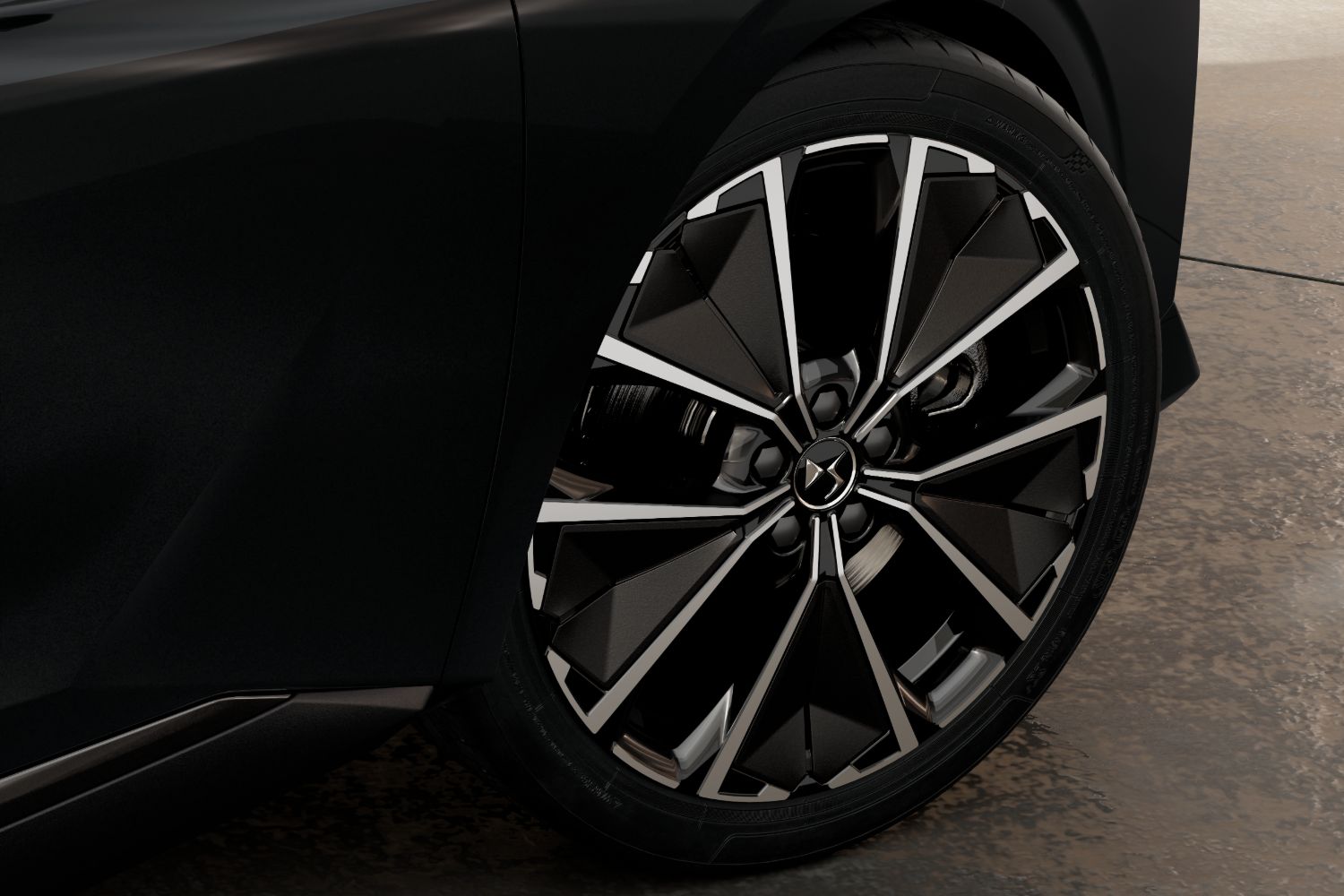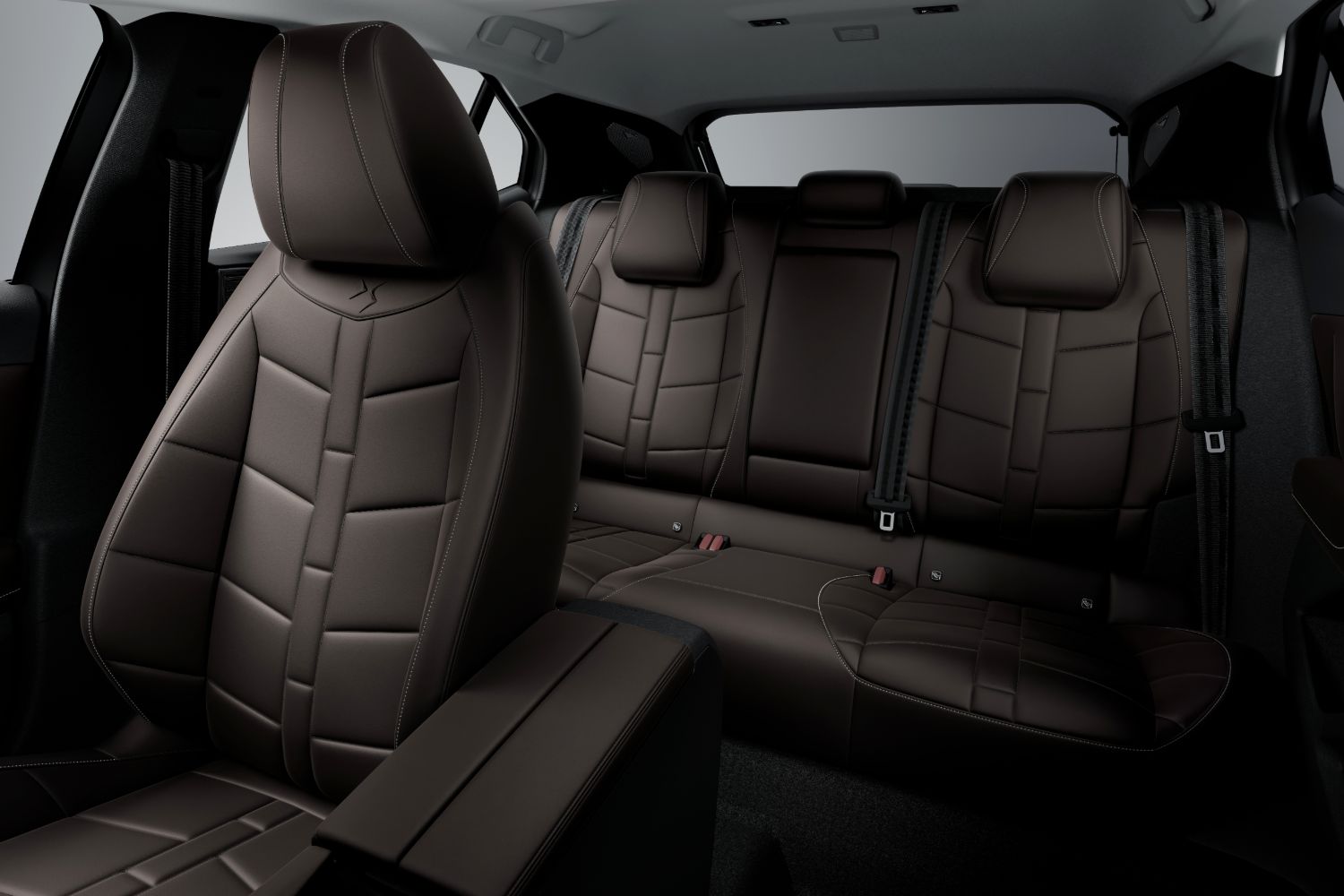DS is replacing its 4 hatchback with the new N°4, in line with the brand's new naming policy. But as well as a new name, the upmarket hatch has also had quite the makeover, with a redesigned exterior and a choice of hybrid and electric powertrains.
It looks quite different…
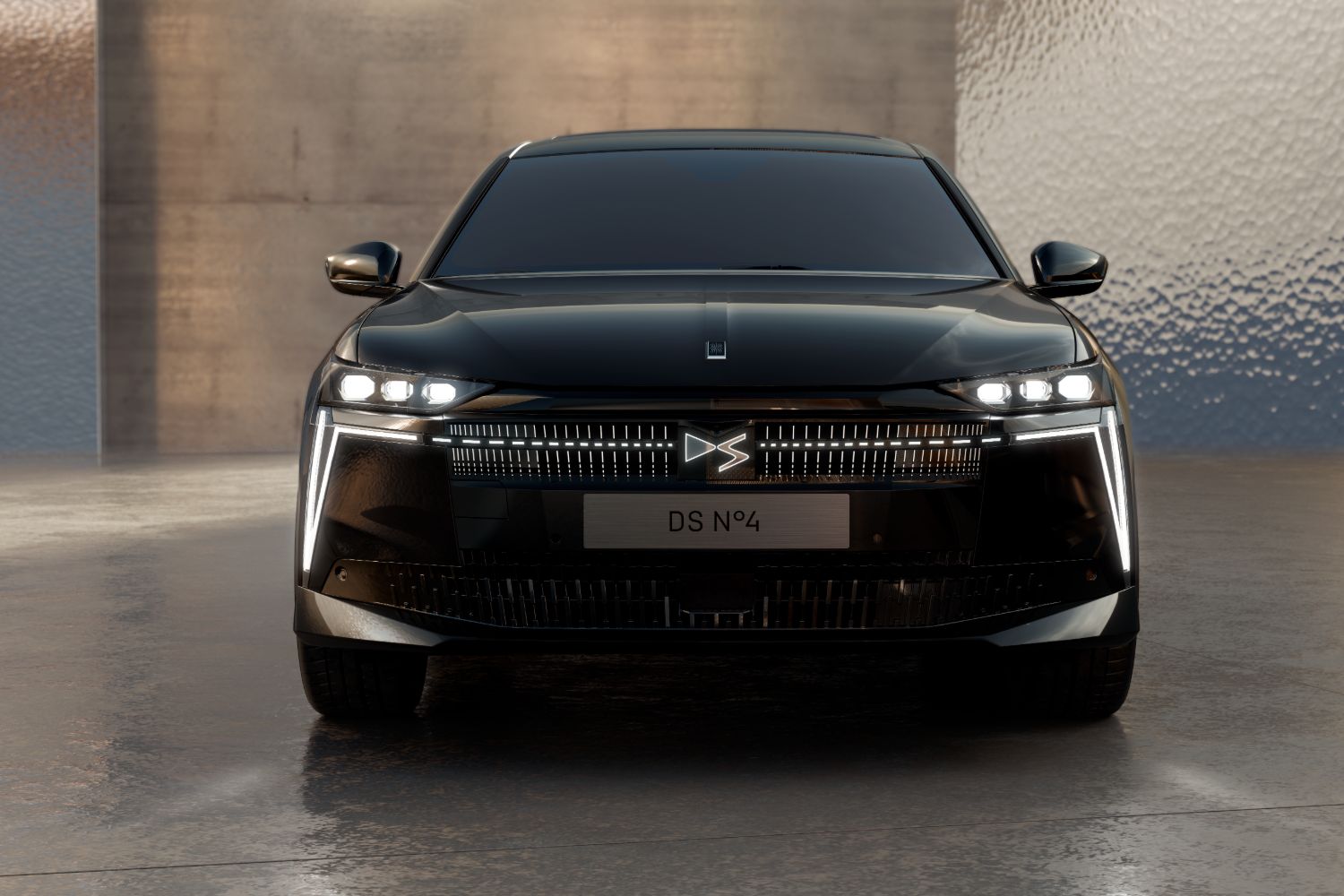
While the bodyshell hasn't actually changed that much, the details certainly have. At the front, there's a flatter nose and a wider grille, as well as a new light signature that mirrors the recently launched DS No8's – the brand's new flagship SUV. The bonnet has grown slightly, too, covering the upper part of the grille, while there are new lights and new wheel designs, with all models getting at least 19-inch rims.
At the back, there's another new light signature, integrated into a dark chrome cover with laser-engraved 'scales' that create a fragmented look. There's a gloss-black bar between the lights, too, and as before, there's DS Automobiles lettering, but the look has changed somewhat in a bid to appear more modern.
What about the interior?
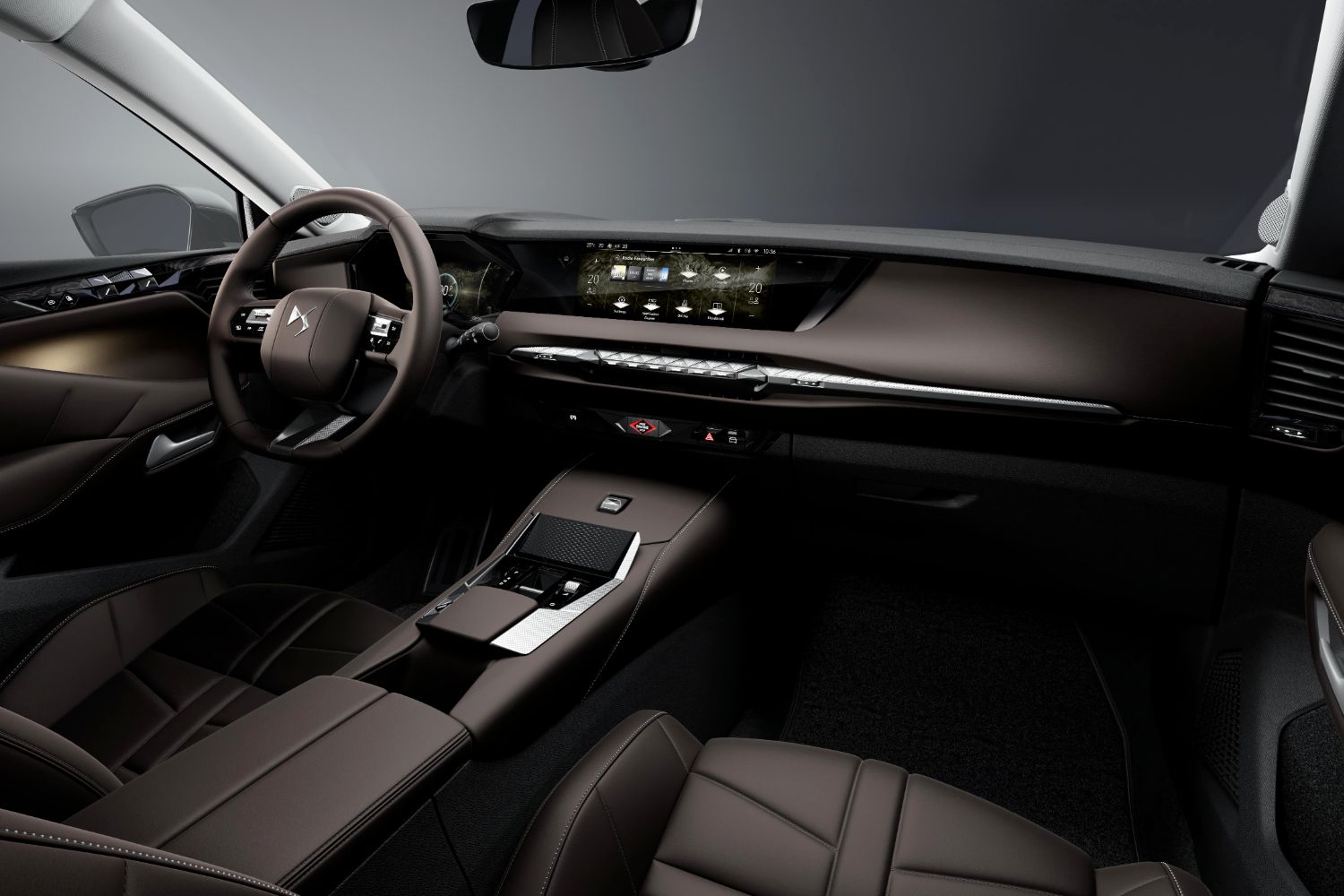
DS has installed a host of new technological upgrades, including a new 10.25-inch digital instrument cluster with graphics inspired by the new N°8, while there's an extended head-up display and a 10-inch touchscreen in the middle of the dashboard. Even the air conditioning is high-tech, with DS Air 'invisible vents' that conceal fins and channel airflow using a tapered tip.
As you might expect from a brand that focuses on luxury, the cabin is apparently lined with fine fabrics and either canvas or Alcantara microsuede, depending on the specification. Customers can also choose seats in Criollo Brown Nappa leather with DS's watchstrap pattern, while wood trim and pearl stitching are in the offing, too.
Sounds good. What about these powertrains?
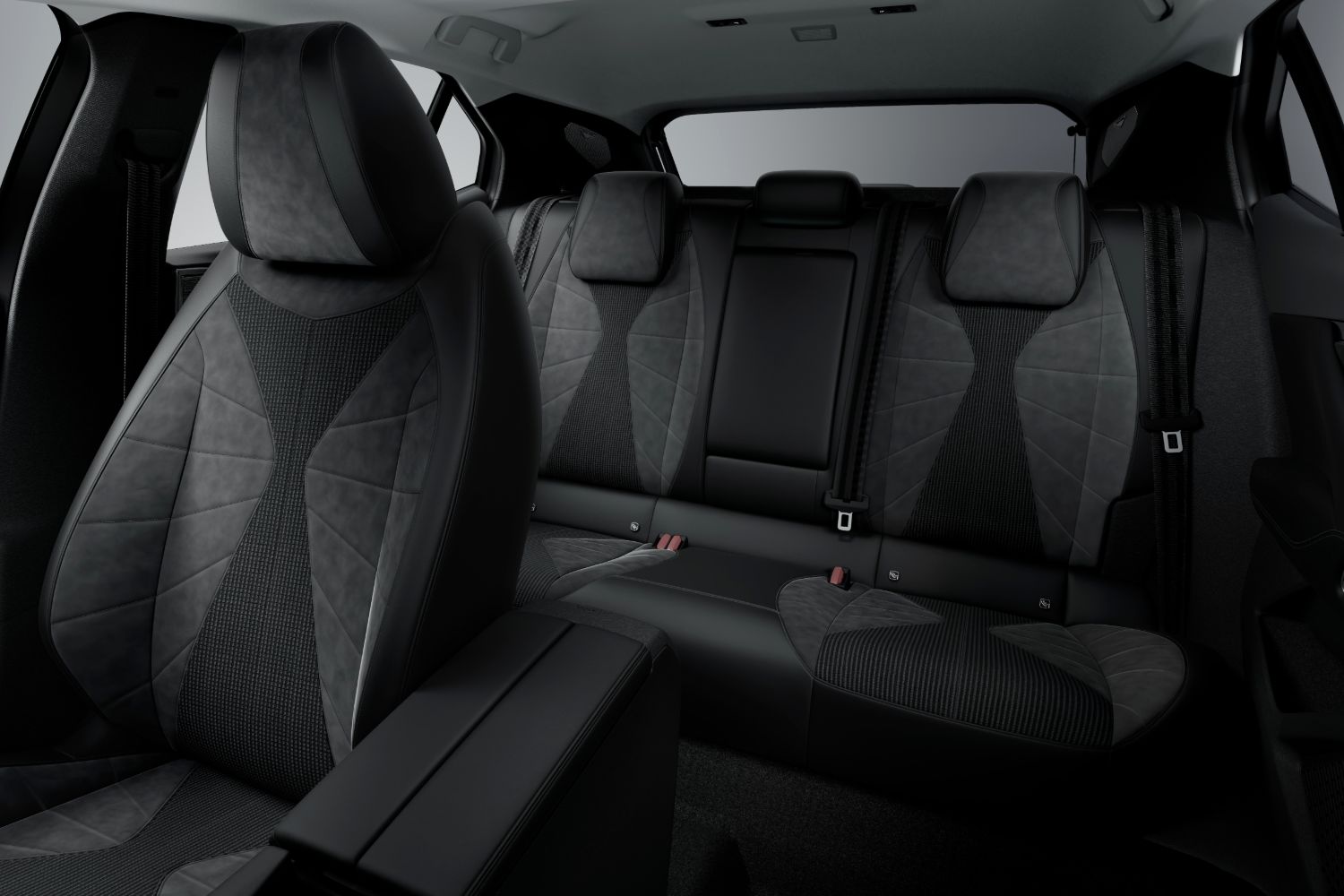
DS will sell the N°4 with a choice of different powertrains, but all will be either hybrid, plug-in hybrid or fully electric. The basic Hybrid version will combine a 1.2-litre turbocharged three-cylinder petrol with an 28hp electric motor and a six-speed automatic gearbox, sending 145hp to the front wheels. DS claims the system, which is 'self-charging' and gets its electrical energy from deceleration and braking, will allow drivers to use the electric motor up to half the time in urban areas.
Above that will be a new Plug-In Hybrid version, with a 180hp four-cylinder turbocharged petrol engine and a 125hp electric motor, both of which send their power to the front wheels via a new seven-speed twin-clutch automatic transmission. In total, the system can send up to 225hp to the front wheels at any given moment, making it slightly faster than the equivalent DS 4 model in a straight line.
Perhaps more importantly, the system is combined with a new 14.6kWh battery that allows the DS N°4 to cover up to 81km on a full charge without needing to call on the petrol engine. However, customers will need to specify the optional 7.4kW on-board charging system if they want to make the most of a domestic 'wallbox' charging point, as the car only gets 3.7kW charging as standard.
What about this all-electric version?
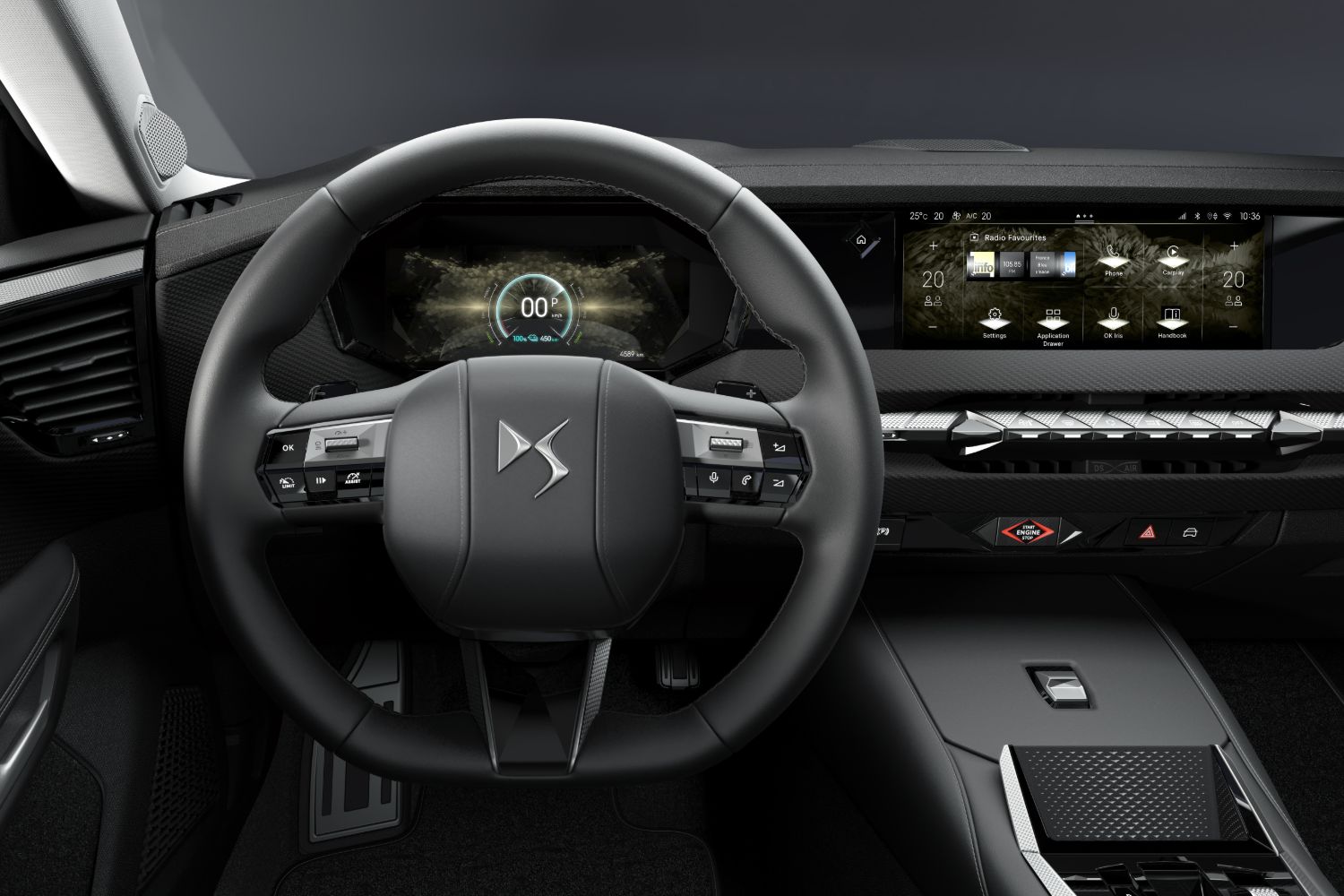
Dubbed the E-Tense, in line with other DS products, the new electric No4 has a 58.3kWh battery pack with a heat pump for maximum efficiency, and the system claims a range of 450km on the combined economy test. That's partly thanks to the altered aerodynamic properties, though, with the E-Tense sitting 10mm closer to the ground than other models and getting some aerodynamic modifications to the grille.
Performance-wise, the E-Tense gets 213hp and comes with a maximum DC charging speed of 120kW, which allows it to charge from 20 to 80 per cent in around half an hour at a suitable public charging point. It can also add up to 100km of official range in 11 minutes.
Anything else of note?
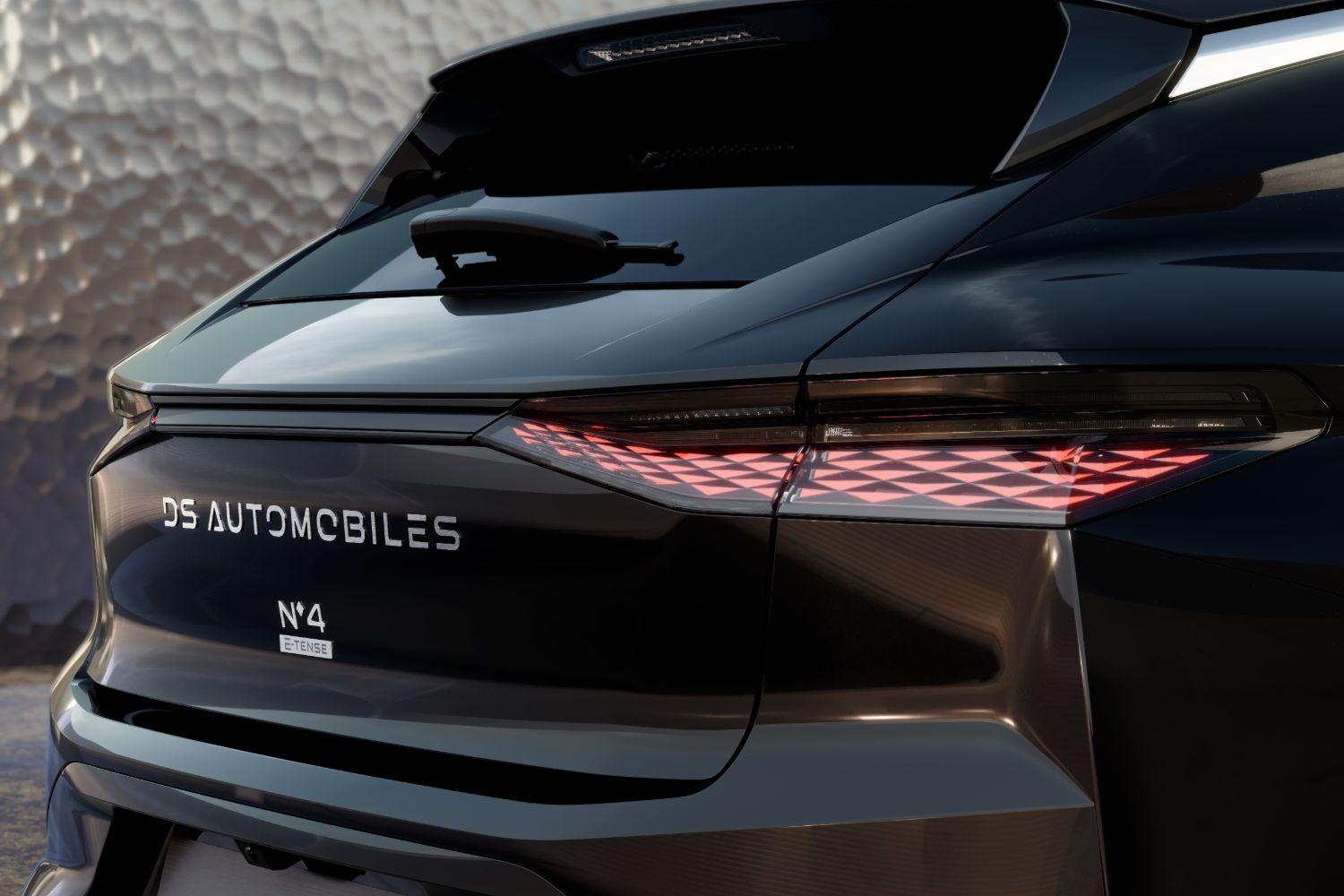
DS claims to have made some chassis developments to make the car strike a better balance between “comfort and dynamism,” while also introducing extra driver assistance technology and driver attention warning tech, which uses an infra-red camera installed in the windscreen pillar to monitor the driver.
Other upgrades include Chat GPT integration in the touchscreen infotainment system, allowing for more natural “conversation” with the car, and the Connect One Pack, which includes 10 years of connected services for the vehicle, including a digital service record and regular remote updates.
However, exact specifications will depend on the trim level, and DS is promising two different versions: the Pallas and Etoile models. While Pallas gets fabric and canvas seats, black interior trim and two-zone climate control, as well as a reversing camera and wireless smartphone connectivity, the Etoile builds on that with part-Alcantara upholstery, more upmarket headlights and power-adjustable front seats.
When can I have one?
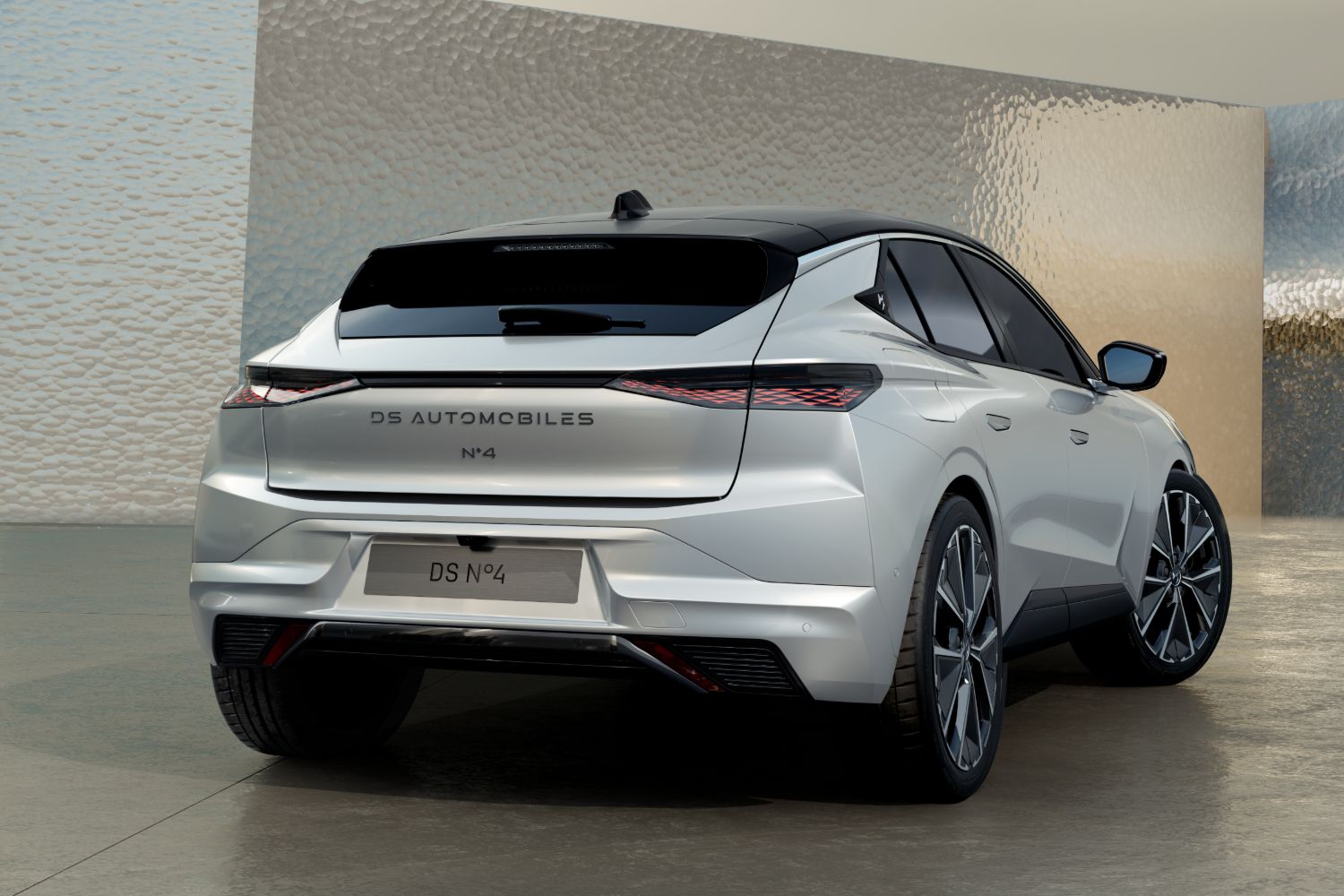
We're expecting the DS N°4 to arrive on the roads of Europe later this year, but full Irish-market prices and specifications are yet to be announced.

